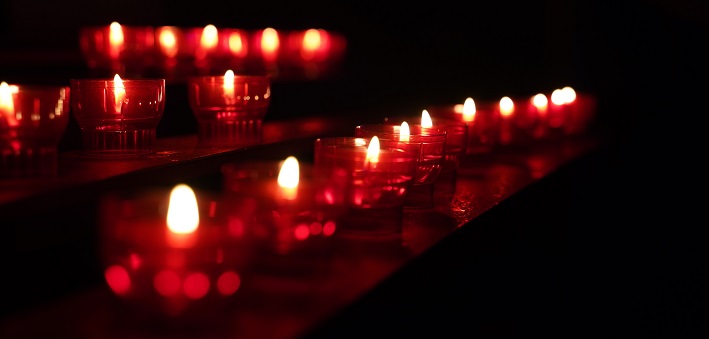Commentary on Psalm 24
Psalm 24 is notoriously difficult to interpret.1
While virtually everyone sees that it falls into three parts: verses 1-2; verses 3-6; and verses 7-10, their disparate nature renders most attempts to explain their interrelationship conjectural at best and speculative at worst. Oh well … here goes!
By far the most common approach to Psalm 24 sees it as a liturgy that sketches the return of the Ark of the Lord. This return may be identified with an actual battle; David’s bringing the Ark to Jerusalem (2 Samuel 6:13-19; 1 Chronicles 15:25-16:3); Solomon’s completion of the Temple construction (1 Kings 8:1-11; 2 Chronicles 5); part of the pre-exilic Feast of Tabernacles; or the post-exilic Babylonian Akitu Festival marking the advent of the New Year. Since Israel did bring the Ark into battle and enjoyed military success as a result (1 Samuel 4), one assumes it would also have been brought back and that its return would likely be celebrated.
Creation and divine kingship are constitutive of other ancient Near Eastern processionals and these are clearly present in verses 1-2 and 7-10. The holy mountain and the sanctuary appear in verse 3. Verse 6 uses vocabulary found in pilgrimage texts. Verses 7-10 mention God’s glory five times, and many passages locate God’s glory in the Holy of Holies in the Jerusalem Temple or in the tabernacle that preceded it (Exodus 40:34-38). In addition, each of the three sections is assigned its own setting: Verses 1-2 as pilgrims approached Jerusalem; verses 3-6 at the city’s gates; and verses 7-10 at the actual ceremony.
Obviously, much of this reconstruction is conjectural, presuming a number of rituals and ceremonies of which we have no record, especially verses 3-6, usually construed as a “test” for admission to the Temple. But the qualities addressed by this test are moral, while admittance to the Temple was denied only for physical reasons.
Recent work on the psalm, provides a measure of encouragement for this reading. First of all, there is a growing consensus that Psalm 24 is an entrance liturgy due its placement in a series of psalms displaying a concentric structure:
A Psalm 15 entrance liturgy
B Psalm 16 psalm of trust
C Psalm 17 prayer for help
D Psalm 18 royal psalm
E Psalm 19 torah-psalm
D’ Psalms 20-21 royal psalms
C’ Psalm 22 prayer for help
B’ Psalm 23 psalm of trust
A’ Psalm 24 entrance liturgy
Second, investigation into the religious culture of the ancient Near East has provided several examples in which statues or idols were led out of a temple only to be returned to the temple, later, in what may be described as cultic parades. If the Ark can be construed as representing God’s presence without breaking the force of the first commandment’s prohibition against idols or graven images, we have a backdrop for this obscure mini-liturgy.
Verses 1-2 celebrate God as the creator of all. This ringing proclamation of divine sovereignty is made all the more emphatic by the placement of “(to) the Lord (belongs)” in rhetorical exposure as the first word of the psalm. Its omission in the second half of the verse provides yet another emphasis since it must be recalled in order to make sense of the phrase. The causal ki that begins verse two claims that God’s creative activity with regard to the ordering of chaos, symbolized by the sea and rivers that figure so prominently in the surrounding culture, is the reason for God’s ownership.
Verses 3-6 make clear that only those who “seek” (verse 6) God can enter the Temple as indicated by “the hill of the Lord (i.e., Zion)” and “his holy place.” But this seeking is a matter of the will. “Heart” refers to what we would call the mind. Matters of the heart, in Hebrew, have to do with the will, not feelings or emotions as in our culture. Similarly, the adjectives “pure” and “clean” that belong to the sphere of ritual in our way of thinking, in the psalmist’s culture are matters of morality and suggest that the proper qualifications will be concerned with integrity and honor. Those who gain admittance are showered with blessing, vindication, and salvation (verse 5).
In a similar fashion, verses 7-10 depict God’s parallel entry, cast in the imagery of Mesopotamian festive processionals that return the divine “presence” to its dwelling, as a celebration of the Divine Warrior, the King of Glory, Yahweh Sebaot (Yahweh of Armies) This claim connects God the deliverer (verses 7-10) with God the creator (verses 1-2). Into this presence of God as creator and redeemer the worshiper enters (verses 3-6) and receives the blessing, vindication, and salvation (verse 5) that he seeks.
One shouldn’t miss the message of verses 1-2 in our day of ecological crisis. The earth does not belong to us and we are not given permission to do to it as we wish. “The earth is the Lord’s (as emphasized in the text), and all that is in it.” We are fast approaching a point of no return with regard to human exploitation of the environment.
In the context of All Saints, this text proclaims the victory of God, not least the victory over evil and death that is ours in Christ Jesus. As we await his triumphal return we can take heart that our loved ones lie safely in his care.
Notes
1 Commentary first published on this site on Nov. 1, 2015.


November 7, 2021